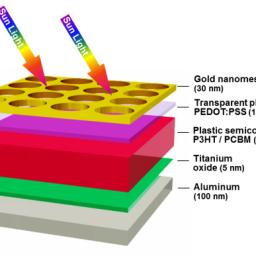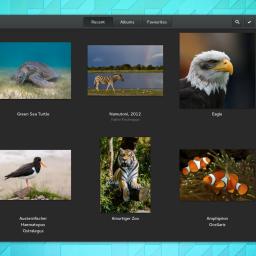
PostgreSQL, the much-loved opensource relational database, is
ramping up its nosql game with a new developer kit that gives access to NoSQL features that beat MongoDB in benchmarks.
The PostgreSQL Project, which EnterpriseDB supports, added NoSQL-style JSON processing features back in 2012. Now, the company is encouraging further work around that feature set by providing a developer kit to make it easier for programmers to leverage PostgreSQL's JSON functions and build applications around them. ... The PGXDK (Postgres Extended Datatype Developer Kit) is designed to allow developers "to use Postgres for the kinds of applications that until recently required a specialized NoSQL-only solution," as EnterpriseDB describes it. A sample application is also included to make it easier for developers to get a leg up on working with the product. The whole package will be made available through AWS as a machine image (PostgreSQL has long been a staple Amazon offering).
Vibhar Kumar has published a set of benchmarks here that show PostgreSQL eating MongoDB's lunch when measured in use of diskspace, bulk loading, and INSERTs.

Considering how ubiquitous LEDs are becoming in our gadgets, phones, and even ambient lighting, it's good to look for efficiencies and process improvements in their manufacture. Princeton University researchers have developed a new method to increase the brightness, efficiency and clarity of LEDs, which may lead to big changes in this technology.
Although they are known for their efficiency, only about 38 percent of light generated inside an LED actually escapes, due to hitting the envelope of the LED at an angle of incidence greater than the critical angle. The trapped light (called total internal reflections) also heats the LED, which greatly reduces its lifespan.
The solution presented by Chou's team at Princeton University is the invention of a nanotechnology structure called PlaCSH (plasmonic cavity with subwavelength hole-array). The researchers reported that PlaCSH increased the efficiency of light extraction to 60 percent. Chou and his team are now conducting experiments to demonstrate PLaCSH in red and blue organic LEDs, in addition the green LEDs used in the current experiments.
This reported breakthrough appears
strikingly similar to one from the University of Glasgow in 2007, similarly reporting the use of cost-effective nanotechnology processes to greatly improve efficiency of LEDs.
PlaCSH technology was first announced two years ago,
reported to offer a 175 percent efficiency improvement to photo-voltaic solar cells, additionally reducing the thickness of the silicon used in traditional solar panels by a thousand-fold, while also being cost-effective to manufacture.
Upgrade now, if you can.
A bug discovered in the widely used Bash command interpreter poses a critical security risk to Unix and Linux systems - and, thanks to their ubiquity, the internet at large.
From the Register:
It lands countless websites, servers, PCs, OS X Macs, various home routers, and more, in danger of hijacking by hackers.
The vulnerability is present in Bash up to and including version 4.3, and was discovered by Stephane Chazelas. It puts Apache web servers, in particular, at risk of compromise: CGI scripts that use or invoke Bash in any way - including any child processes spawned by the scripts - are vulnerable to remote-code injection. OpenSSH and some DHCP clients are also affected on machines that use Bash.
Now is also a good time to wipe your servers and reinstall Minix or Plan9 as a precaution. ;)

Blackberry has released a phone that either pushes the boundary of phone design in useful ways, or proposes a new and unusable form factor, according to your personal pre-inclination.
The Register reviews it and calls it crazy, but full of great ideas. It's square, for one, a radical departure from the candy-bar form factor so prevalent in modern smartphones. It's also sporting improvements to its QNX-based new OS, a great screen, and reportedly a 30 hour battery life. It runs Android apps natively, with no apparent lag or problem. Lastly, the keyboard doubles as a trackpad - something you'll either love or hate.
The Guardian takes a look at it here, and offers some other insights. There are some lovely pictures at The Verge, who conclude, by they way that they don't like it.
[Ed. note: Me, I want one.]
 Gnome 3.14 has been released
Gnome 3.14 has been released, six months after the last version. Sporting "new features and bug fixes, and 28859 changes by approximately 871 contributors," install this new version to enjoy:
- a new weather panel
- support for captive portal (wifi hot spot authentication)
- multi-touch features
- household network connection sharing
- support for online picture-sharing sites
- improvements to the evince PDF reader
... and more.
[Ed. note.] I've never seen release notes that look they were put together by a website designer and marketing agency. What happened to a bunch of bullet points in ASCII posted to Usenet? These release notes are "gorgeous."
 PostgreSQL, the much-loved opensource relational database, is ramping up its nosql game with a new developer kit that gives access to NoSQL features that beat MongoDB in benchmarks.
PostgreSQL, the much-loved opensource relational database, is ramping up its nosql game with a new developer kit that gives access to NoSQL features that beat MongoDB in benchmarks.

